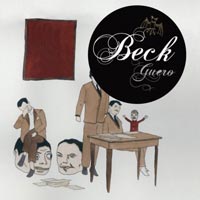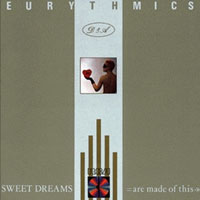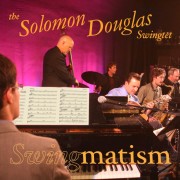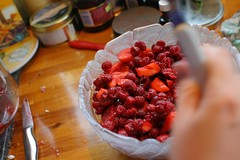I’ve been writing a bit about women and blues music and dance lately, my ideas fed in part by my research for the thesis, but also (and perhaps more importantly), stimulated by my own experiences as a woman in the swing dance community.
I’ve been asked to do a guest spot on a fairly spec online culture blog, writing specifically about my own research. I’ve had a bit of a think about it, not much, I must admit, as I’ve been a bit distracted, and really, I just can’t seem to put anything together in my head. I mean, I have no idea what I’d like to write about. I’ve kind of got stage fright. This is the first mass-public airing of my work where I’m likely to get/see immediate feedback (in the form of comments), and unlike academic journals or conference papers, I feel there’s a bit of pressure to write well and accessibly. I do think that the format is quite different – shorter, lots of linkage, etc etc.
And while I just know that this is a fabulous opportunity, I can’t seem to put my ideas together.
I’d quite like to do something like this hot and cool entry (with some tidying and a more coherent structure and, well point), but I’m not sure how to start.
I actually got to the hot/cool entry by way of this entry on women, blues and dance, which developed from this (fairly ordinary) entry on the same topic. And of course, that was a response to Kate‘s responses to a CD I sent her with a copy of a blues set I did a few weeks ago.
Of course, for me the most interesting part of this whole chain of thinking is the fact that we began with a set list posted on the internet, which is something I have started doing recently as a replacement for the fairly fizzly thread on the Swing Talk board where we did list our set lists ages ago, but which has recently fallen out of favour.
I found that thread particularly useful as a beginner DJ – I could see what sorts of songs different DJs in Australia are playing, the ways they’re combining them, and then (perhaps even more interesting) I could read their own comments on the sets and how they went. I read that thread in conjunction with this DJ bubs thread (which gets interesting on the second page) and the Swing DJs board, where I’m too scared to post. And of course, I also spent a great deal of time clicking between amazon.com (or cduniverse.com) and allmusic (a site which used to be better) for sound clips and musicans’ bios respectively. Radio programs like Hey Mr Jesse, which are only delivered online as podcasts have recently become really important to me (I don’t think it’s a coincidence, as Jesse has been producing this show since January 2006 and I started DJing in February of this year).
Talking about DJing in person, with real, live DJs has played a suprisingly small part in my learning to DJ. I think this is in part because I prefer to dance when I’m not DJing, dance venues generally aren’t too good for talking about DJ, and I’m not really interested in getting together to talk DJing – I’d rather talk about other crap. I do discuss levels and technology when I’m DJing or when someone else is DJing – I ask knowledgeable friends questions like “why does that sound like shit?” and then do a little hypothetical problem solving.
These were the sorts of resources that I was using to help me learn how to DJ. I was full of ideas about DJing (in part prompted by my thesis work and chapter on DJing, but not entirely – I found that most of my theoretical ideas about DJing were actually bullshit and needed to be revised post-practical experience), and feeling creative and inspired. The fact that DJing is nine tenths compulsive CD collecting and song cataloguing no doubt helped me along (I can stop whenever I want. I don’t have a problem. I don’t need to organise things. No way).
Posting set lists (and posting my discussions of them), getting feedback from more experienced DJs, and learning about DJing from reading their posts, in combination with all those other sources helped me get a handle on DJing. I must add, without the practical experience of DJing, none of these things would have been any good to me at all. And of course, most of my ideas about DJing and how to DJ are in turn fostered by my own dance experience – both in Melbourne over the years and overseas – and and by listening and dancing to other DJs’ sets.
I think it’s also important to note that all this online toing and froing is a really interesting aspect of swing DJs’ activities generally – I wrote about this in the chapter on DJing. Because we live so far apart (particularly in Australia), the internet has developed as a fabulous tool for networking between DJs, for the development of skills (and increasingly for me), networking with event organisers for scoring gigs. Travel has also been important, as it gives me a chance to touch base with DJs from out of town.
And, of course, I have to make note of the fact that I know only one female DJ from out of state who has a decent amount of experience and comes out dancing regularly or posts on Swing Talk. Here in Melbourne, there are far more female DJs than in other scenes, in part (I think) as a result of the recent ‘opening up’ of DJing at major venues like CBD (which has so many sets to fill each month and has been organised by people who have been clearly interested in expanding the DJing base in Melbourne), and (to a degree), the importance of buddying between new DJs. Glancing over the DJing roster for CBD in January, I can see that six out of the eight DJs rostered on are female. I also note that of those eight DJs, there are only perhaps two who I’d make an effort to go dancing for. Of all these DJs, most tend to play far beyond the limits of ‘swinging jazz’, with only three (myself included) playing (almost exclusively) swinging jazz from the 1930s-50s.
I have wondered if the serious emphasis on the cultural (and material) capital required for playing swinging jazz is exclusive – does it discourage women? I would suspect so. The largely exclusive language of sites like Swing DJs requires a fair bit of dancing (and listening) experience, and most of the DJs on this one sample list have only a couple of years dancing experience. The least proficient have also travelled the least (and travel, of course, demands lots of dosh). On a further note, only two of the DJs on this list are determinedly not interested in acquiring their music by illegal or file-sharing means. They are, also, the ones with the greatest interest in swinging jazz.
How do I feel about all this? I think it’s quite clear (as I wrote in my thesis) that becoming a ‘good’ DJ (and I think that ability is a combination firstly (and most importantly) of DJing ability – combining songs, keeping the floor full, ranging across a variety of moods and styles – and musicall collection – playing swinging jazz) is restricted to those with the time, money and opportunity to invest. I feel uneasy with my personal insistence that ‘good DJs’ are those who play swinging jazz, even though I know that playing unswing results in inevitable adjustments to lindy hop technique (most of which I think are not good – they result in a simpler, musically and techically less interesting dance). I feel (on some level) that I should be ok with DJs playing unswing, as unswing is more accessible and therefore a means by which more women (and less financially well off DJs) can get access to the DJing role.
I have written at length about the ways in which the ‘recreationist’ imperative of many swing dancers is a discomforting (and selective) use of history which (as I have said before) neglects the darker parts of African American history and eventually recreates scary gender stuff.
So how am I to contribute to DJing discourse when I find so many bits of it so difficult?
There is the option of using ‘buddying’ to encourage new dancers to discover swinging jazz. But that feels condescending – who am I to tell people what ‘good’ music is, especially when many of them are patently not interested in this historical stuff? And really, when the whole history of African American vernacular dance is about cultural relevence, why should I encourage dancers (and DJs) away from the pop music of their day?
I might choose to give copies of the sorts of music I really like to other DJs – how else to be sure I get to dance to the music I like? I have reservations about this on the basis of IP, but also because I have found (in the past), that sharing really good songs with one person will see them spread out, diseminated to other dancers and DJs until I find that dancers are using that song (and that version of that song) to perform routines for paid gigs. And it’s even more frustrating to find that the artists’ name and recording details have dropped from the song, so it is circulating only as a digital, nameless file.
On the one hand, this is interesting stuff. On the other, it concerns me because (particularly when these are living artists), there are musicians being screwed. I will not go as far as some other DJs and say that I resent this illicit circulation because I’m losing some sort of cred as the ‘discoverer’ of this song who ‘brings it to the dancers’ (I’m not that naive or that arrogant – this is pop music, doods). Nor will I say that I resent this because other DJs play this song, so robbing me of my ‘ace in the hole’ crowd pleaser (and attendant status as ‘awesome DJ’), mostly because it’s cool for other DJs to hear a song, ask what it’s called, say “that frickin’ rocks”, hunt it out on itunes or amazon, then play it when they next DJ (and I get to dance to that song when they play it). That doesn’t worry me. It’s more that the song is circulated as a burnt disc or shared file, with the song title, artist, recording year and musicians’ details stripped from it. It also worries me that while I might share a song or songs as a gift, other DJs and dancers compile CDs which they then sell to others. That worries me.
As a dancer, it’s frustrating when DJs simply take a ‘found’ or ‘exchanged’ or ‘gifted’ song and play it to death, without exploring that artist’s other work. I hear one version of (for example) C Jam Blues by the Lincoln Center Jazz Orchestra, and I think ‘yes – now we’re going to hear more swinging jazz. Finally. No more bullshit unswing that makes for crap dancing’ (and as a dancer, that’s how I think – I have no tolerance for unswing. I want to lindy hop to swinging jazz). But that song ends up just as one drop in anotherwise intolerable sea of overplayed pap played in clunky, unpleasant combinations that make for a night of shit dancing.
So I am in kind of a bind. My feminist instincts say ‘fight the power’ and ‘information (and music) wants to be free’. But my dancer instincts say ‘play some good frickin’ music, and learn to DJ well’.
This post has rambled on far longer than I had intended. And far beyond the original point that I wanted to make. And I kind of think it’s become a bit of a tirade against local media production and use practices in Melbourne swing culture. Which is very un-cultural studies of me.


 but it seems I bought that quite a few years ago.
but it seems I bought that quite a few years ago.

 But Sol’s album really is very good – if this band was playing regularly in my city I’d be a very happy lindy hopper indeed. They’re certainly better than the B# Big Band who are the closest thing Melbourne has in comparison, and I prefer them to the JW Swing Orchestra, who are our other major swinging big band (there are others, but these are the only dancer-oriented/dancer-trained bands).
But Sol’s album really is very good – if this band was playing regularly in my city I’d be a very happy lindy hopper indeed. They’re certainly better than the B# Big Band who are the closest thing Melbourne has in comparison, and I prefer them to the JW Swing Orchestra, who are our other major swinging big band (there are others, but these are the only dancer-oriented/dancer-trained bands). The other CD I scored was the fabulous 8-CD Mosaic set. The Squeeze is the sneakiest beast on earth. In town doing our christmas shopping the other week, he suggested popping in to Basement Discs (where I’d seen this set) for a bit of browsing. I poo-pooed the idea in favour of goal-oriented shopping. He later (or had already – I’m not sure which) popped in to pick this up himself. And I scored big time.
The other CD I scored was the fabulous 8-CD Mosaic set. The Squeeze is the sneakiest beast on earth. In town doing our christmas shopping the other week, he suggested popping in to Basement Discs (where I’d seen this set) for a bit of browsing. I poo-pooed the idea in favour of goal-oriented shopping. He later (or had already – I’m not sure which) popped in to pick this up himself. And I scored big time.
